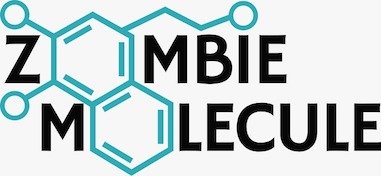
CABLE ASSET MANAGEMENT
VR EXPERIENCE
LIVE
CHALLENGE
For a utility asset management startup, create an innovative, differentiated training service experience, which addressed field technicians talent gaps when mapping utility cables under the ground across various locations on the planet.
Implement the service with the clients overall brand promises, and without disrupting the existing portfolio offering.
Length of Project - 4 month, UX Design effort - 2 weeks
APPROACH
To fully address the engineers needs and pain-points, I performed a study that included ethnographic research and existing utility cable tracking data.
Used insights gleaned from research to create several scenario concepts through extensive ideation, mapping to field engineer segmentations and behavioural user types to indicate highest value.
Combined research with rigorous data models to pave the way for a VR product and learning service ecosystem that would make significant impact on field engineers. At every step of the way, I observed field engineers to validate, co-create and prioritise executable ideas.
OUTCOME
Commercial launch of the new training service in this space changed certifications, the teams approach improved the quality of scanned utility cables in the client data-tables.
The training simulation using VR has set a new standards for building empathy-driven and personalised training experiences for field engineers, localising for the needs of energy companies who need their utility cables mapped.
Client used the training VR experience as a ‘go-to-market’ training service offering, generating new revenue streams with Fortune 100 utility companies.
DAY-IN-THE-LIFE OF AN ON-SITE TECHNICIAN
Before designing the VR experience, I had to understand what jobs the on-site technician was doing when locating assets, who needed those assets and where the assets location data was being stored to make an analysis on performance. I spent a week in the USA following and understanding how on-site technicians, technician field managers and asset location analysts worked with each other. After observing with the stakeholders, I determined the centre of the experience for the VR would be around the day-in-the-life of a field technician.
Observation of on-site field technician and mapping how locator data moved to other stakeholders
“Our biggest resource waste is time and money on continuous re-training of on-site technicians. They are generally drop-outs from school who need a job, and we take them on because we need cables scanned to support planning applications going through. [startup company] already provides my supervisors and managers full insight into the locate work on-site technicians provide to ensure the work is being performed, but we don’t have a test environment to improve locator training, develop best practices in order to fulfil customer expectations on all projects.”
IDEATING AN ELECTROMAGNETIC 'RISK FREE' ENVIRONMENT
Upon returning from my research, I facilitated a workshop with an RF engineer, industrial designer and product owner to go though the my observations. Using the deliverables I created, we co-designed several scenarios and decided a game-based approach based around locator skillset would work best for the VR experience. This thinking helped to identify requirements of what electromagnetic environments would be needed in order to develop the right datasets for the unity developer to code into the experience.
Discussing with the team how to simulate an experience
DEFINING THE USER 'VR' EXPERIENCE
Post-workshop, I looked at the bigger picture of the experience and determined each stage of user engagement from beginning, middle to end. I drew out a common user journey users would go through all of the time, as the scenarios were only about difficulty in locating cables. To test the user journey, I shared it with the client's CTO, RF engineer and unity developer where we role played out what the experience could be 'with' and 'without' a VR headset.


Testing the user journey by role playing the experience
DEVELOPING THE VR EXPERIENCE
The role play of the experience led to a number of iterations of the user journey until all sequences had been determined. Two user types emerged in the journey 1) user of the VR and 2) Instructor running the simulation. A challenging part of the project was how we simulated different electromagnetic signals in the VR. To understand what requirements would be needed, I used the journey map to sketch out system flows for both user types and collaborated with the unity developer to explore technical feasibility. We iterated the flow and sketched a number of visuals, which were valuable in understanding how the physical device could be used to simulate asset locations in the VR environment.
Determining the flow to define visual electromagnetic signals in VR and screen designs for instructors
MARKET LAUNCH
We packaged the VR experience on a laptop and shipped it with the VR kit to an expo in Florida (USA), where the client successfully demonstrated with perspective utility companies. The experience created a competitive environment between utility companies. The solution also got recognised by a university who expressed interest in helping the client write a curriculum and certify it for on-site technicians who had not previously acquired qualifications.
Showcasing at an expo with the VR experience











